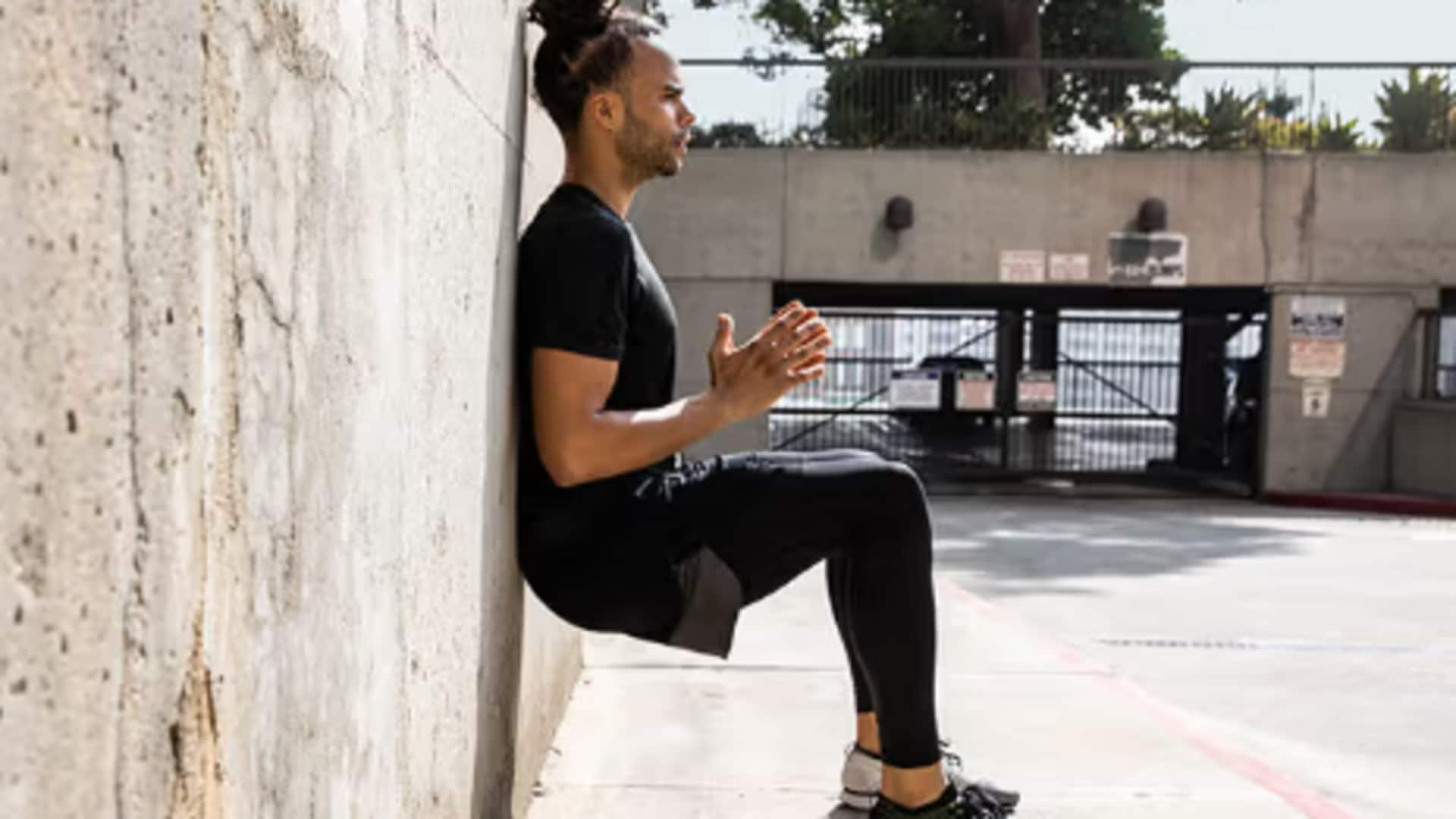
5 wall sit exercises to boost leg endurance
What's the story
Wall sits are an amazing exercise to build endurance in your legs, especially the quadriceps. The static exercise requires you to sit against a wall as if sitting on an invisible chair, working multiple muscle groups. Adding variations to your routine can help target different muscles and keep things interesting. Here are five wall sit variations that can help you build leg endurance.
Tip 1
Single-leg wall sit for added challenge
The single-leg wall sit is an advanced version of the traditional exercise. In this variation, you lift one leg off the ground while holding the position against the wall. This increases the intensity by forcing your core and stabilizing muscles to work harder. It improves balance and coordination, while also giving your legs a great workout.
Tip 2
Wall sit with calf raises
Adding calf raises to your wall sit routine can help target the calf muscles, along with the quadriceps and hamstrings. While maintaining the wall sit position, raise your heels off the ground and lower them back down slowly. This variation helps improve ankle stability and strengthens the lower legs.
Tip 3
Weighted wall sit for increased resistance
Using weights during a wall sit can increase resistance and make the exercise more effective for building endurance. Hold dumbbells or a weighted plate close to your chest while performing the move. The added weight challenges your muscles more, promoting greater strength gains over time.
Tip 4
Wall sit with leg extensions
Incorporating leg extensions into your wall sit routine targets both the quadriceps and hip flexors. From a standard wall sit position, extend one leg out in front of you without breaking posture or balance against the wall. Alternate legs after each repetition to ensure even muscle development.
Tip 5
Pulsing wall sit for endurance boost
The pulsing wall sit is all about small, controlled movements up and down while maintaining the basic position. These constant contractions keep the muscles under tension for longer, improving endurance over time. This variation is particularly helpful for those looking to improve their stamina during long-lasting activities, such as running or cycling.